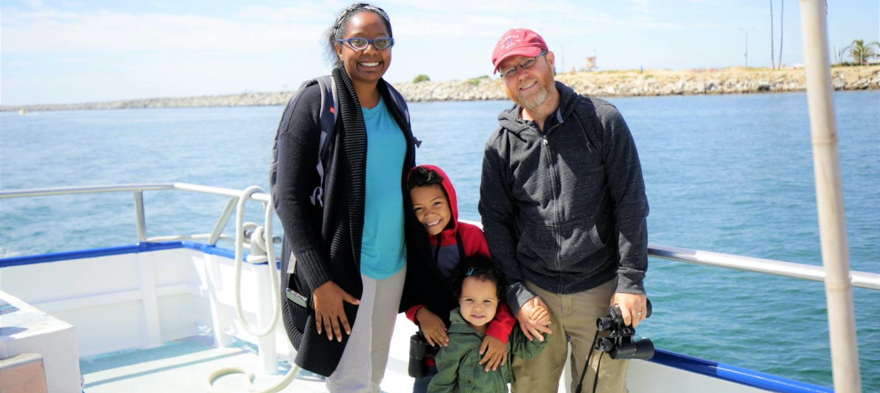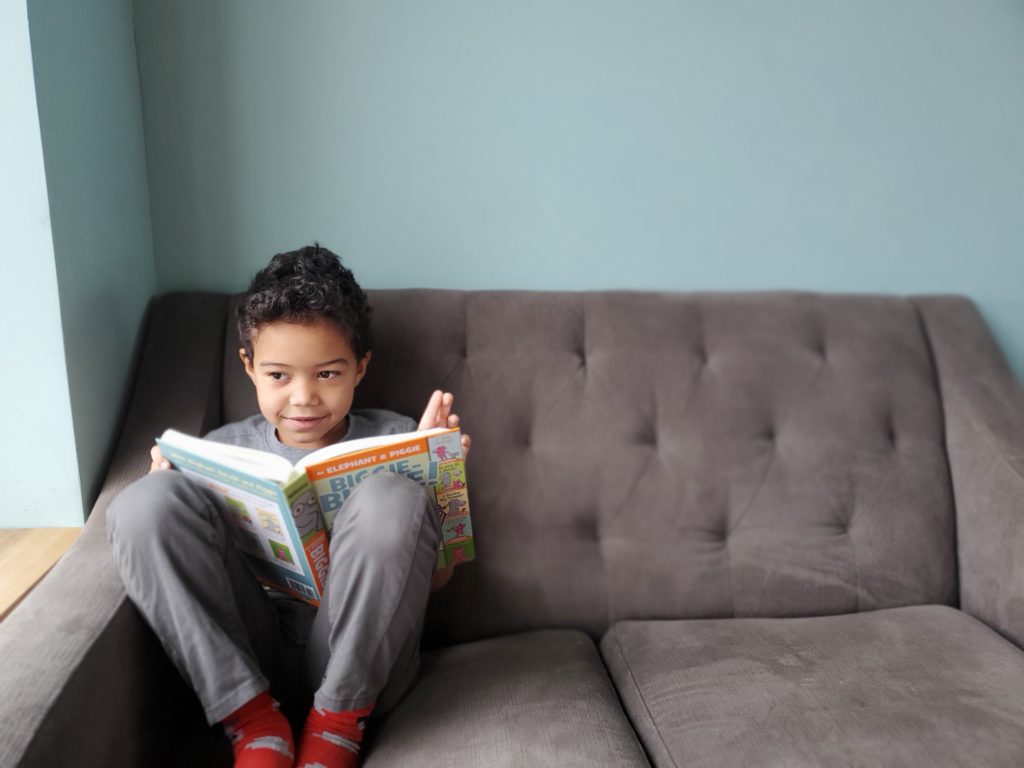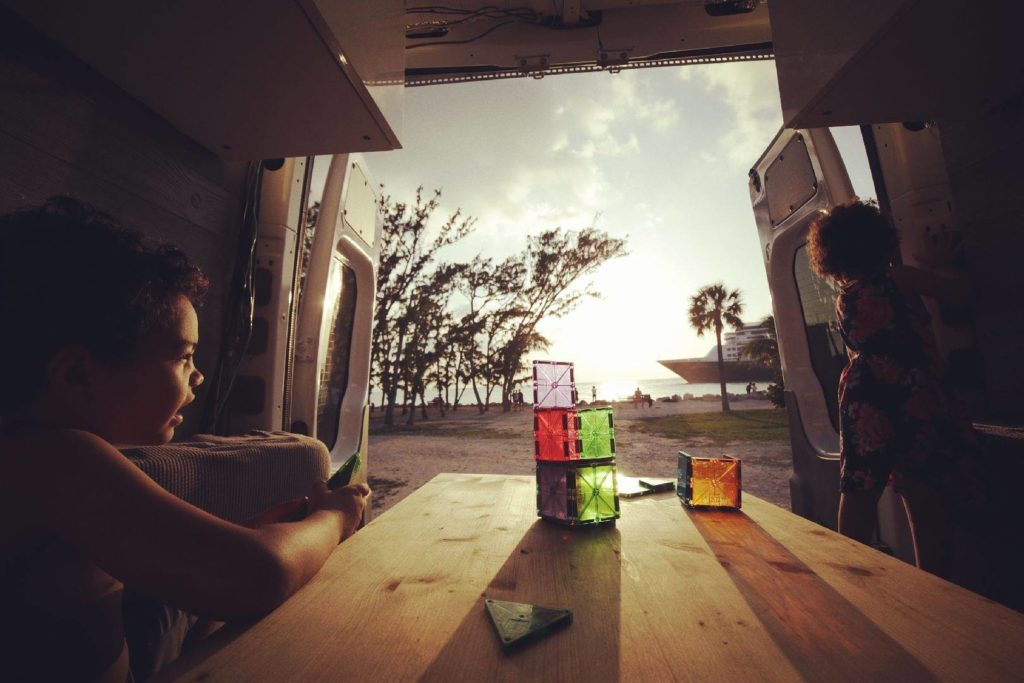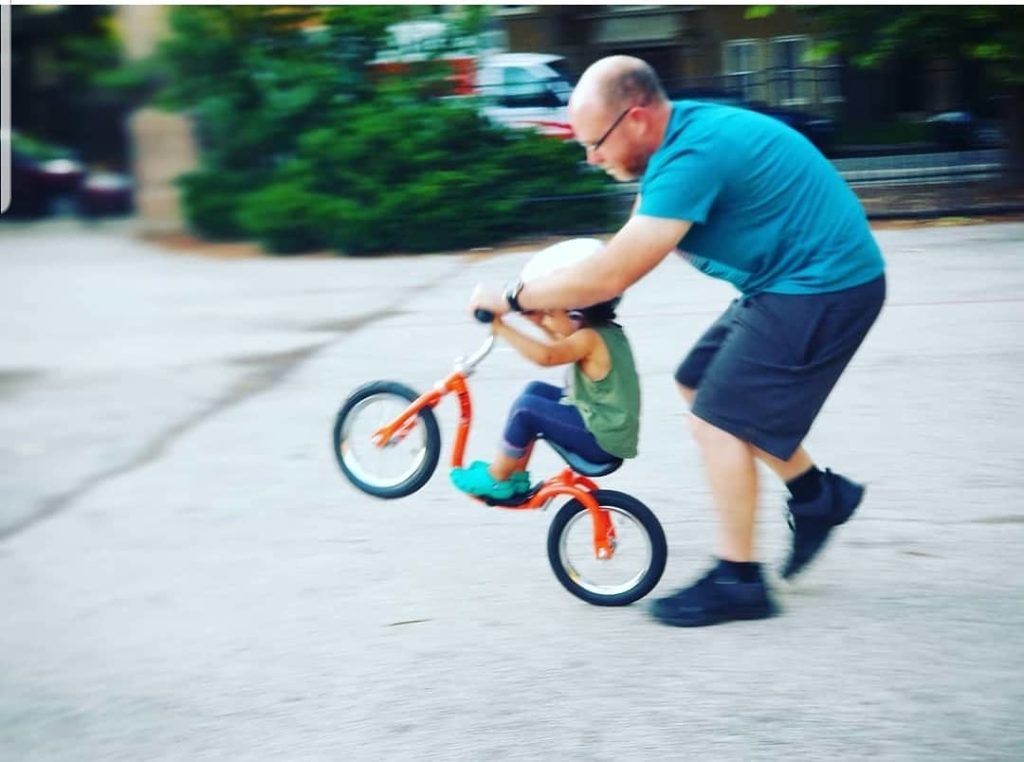
Apr 3, 2020 12:00:00 AM
by Tiana Kubik
Editor’s note: This post originally appeared on Chicago Unheard. In this time when millions of families have suddenly been thrust into unplanned homeschooling, Chicago Unheard is reaching out to experienced homeschoolers to hear their stories. In this blog post, Tiana Kubik shares her family’s experience of unschooling, where children take the lead in designing their own educational experiences. While those unfamiliar with the method fear that children will end up with holes in their academic skills and miss out on social connections, preliminary research on their later-life outcomes shows that unschoolers go on to college in high numbers, find employment and grew up making a wide range of social connections.
Our family has been working from home with children for seven years. For the past two years, we have been unschooling our now 7-year-old. Before that, he did two years of half-day preschool. The closer we came to sending our kiddo to public school, the more I started seeing homeschool as a more viable option. This wasn’t always an easy choice, but it has made sense for our family.

We opted to create a family culture where working, learning and living our days together is a standard routine for us. Our younger daughter is just three years old and so far is following in her unschooling brother’s footsteps.
[pullquote]The American public school system does not foster the love of inquiry and learning that I think is essential to thriving as a human being.[/pullquote] Some individual schools and teachers somehow make the system work. Still, the amount of energy I saw friends putting into advocating for accommodations or even more playtime was disheartening.
The freak out I would have over all the aspects of sending my child to school would equal those of parents who are freaking out about NOT sending their child to school. Cue panic attack just thinking about drop off lines, fundraisers, spirit week and homework. Unschooling is not always easy, but it is always worth it to us.
It didn’t fall into place right away, either. After lots of tears and thoughts that school just might be more suitable, we finally hit our stride. There is no secret recipe, and it doesn’t work all of the time. Through all the ups and downs, our days of thriving and vibing come down to three beliefs that guide our actions:
Consistency over frequency is the same as saying quality over quantity. Some look at color-coded schedules and cry. Some look at them and find comfort. You aren’t doing it wrong either way. If your family functions well like this, make it work. If your family does not, like mine, don’t even give it another look.

What matters the most is that you are consistent, and children have expectations of what comes next and loosely when things are happening. What are the work hours? What is the process for lunch? What comes before and after any given activity?
There can be exceptions, but only after the standard has been set and practiced for a while. When we had no consistency, we had chaos. The kids were utterly melting down because there was no way for them to predict what was next. When we are consistent, even with big open schedules, [pullquote position="right"]the kids were calmer, happier and actually more flexible.[/pullquote]
I find that this is where I most often drop the ball. I get so wrapped up in my deadlines that I become a dictator. I treat the children like minions to be told when and where to be. In reality, the more I keep the two-way communication open, the more I can manage work and their needs. Letting them in on planning the day.
I am always trying to be flexible where possible, and when I need to be firm on specific points, I explain to them why. I try to treat them as human beings with their own wants, needs and goals.
My job isn’t to get them to fall in line. My job is to work with them to get all of our needs met in the most effective way possible. If they feel heard and know that their requests will be met more often than not, they are more likely to be flexible in return.

This is also very helpful in getting them to engage in long projects (long independent projects = long uninterrupted time for work). We discuss and observe what they are really interested in and good at. Then we find the resources and time for them to be able to explore those things and excel at them.
Connection is at the heart of everything. Want your child to love learning a particular topic? Find something in the material they can connect to or find a way to bridge that connection through their relationships with people or things they already love.
Need your child to give you time to complete a project or conference call? Sandwich that time with activities that connect them to you.
When you spend much of your time together, it is actually more important to focus on these moments to connect. It is easy to mistake to feel that taking up the same space as spending time together.
It is also easier to use everyday life to stay connected. Make meals together, clean together, fix things together. Any opportunity to have them join you is a point of connection and probably also a good lesson to learn. Even if the experience is simply to learn that they are loved and valued.

This is our formula. It requires a good dose of flexibility from the norm. We have to rethink how we approach teaching and parenting, but ultimately, it is a guide that has served us well. When we feel disequilibrium in our family, we check these values. We almost always find where we have fallen apart and work to find our way again. In the end, it is not about being perfect. It is about creating a culture in our home that allows us all to thrive and learn together.
Tiana Kubik has a Bachelor of Science in family community services from Michigan State University and a Master of Science in early childhood education from the Erikson Institute, in Chicago. Tiana was a teacher for Pre-K-Kindergarten for almost ten years. Tiana now works full-time running a Chicago-based photography company with her husband, with both my kids in tow for the last seven years. They have been homeschooling/unschooling their children, ages 3 and 7 years old, since 2018. For the last year, they have been exploring North America through living and traveling in a self-converted 2016 Sprinter Van. Follow along at their unschooling and travel adventures on Instagram: @usalongtheway.
Few issues in education spark more tension and debate than standardized testing. Are they a tool for equity or a burden on students? A necessary check on school systems or a flawed measure of...
Charter schools are public schools with a purpose. Operating independently from traditional school districts, they're tuition-free, open to all students, and publicly funded—but with more flexibility...
Despite the benefits of a diverse teaching force, prospective teachers of color fall out of our leaky preparation pipeline at every stage: preparation, hiring, induction, and retention. Here’s what...
Ed Post is the flagship website platform of brightbeam, a 501(c3) network of education activists and influencers demanding a better education and a brighter future for every child.
© 2020-2025 brightbeam. All rights reserved.
Leave a Comment